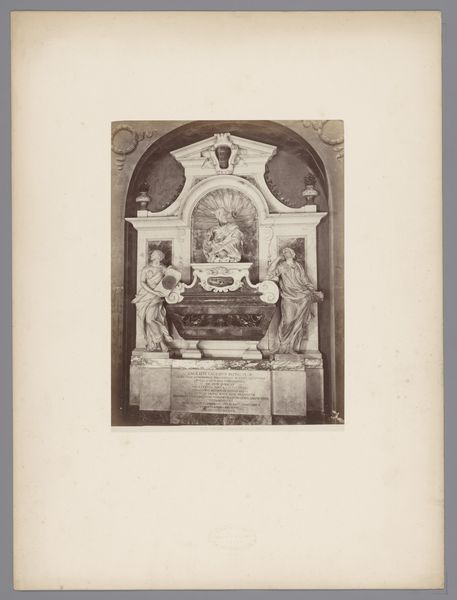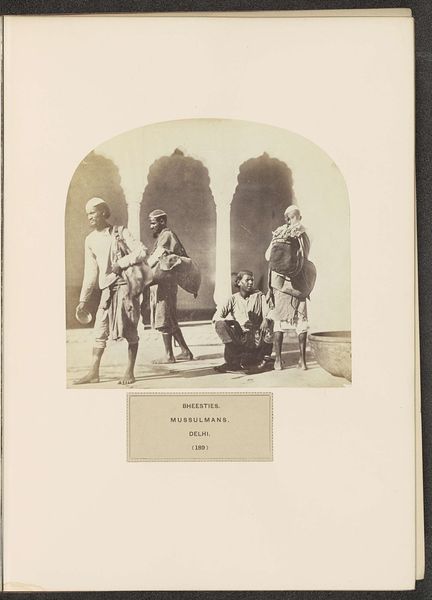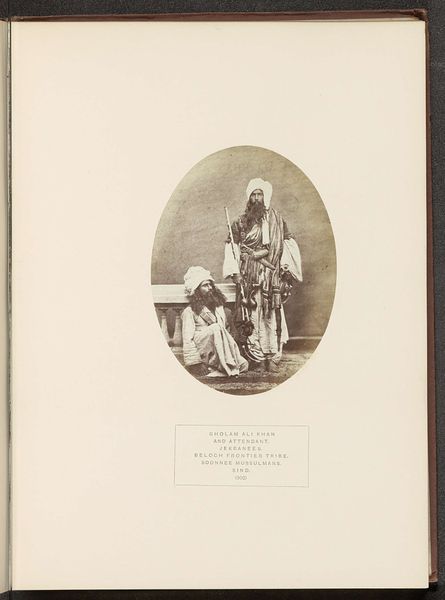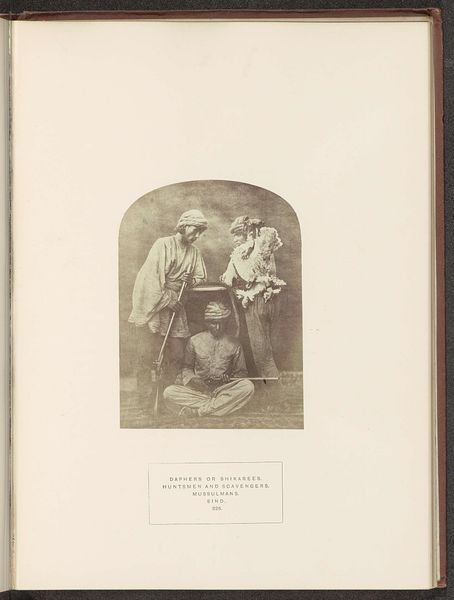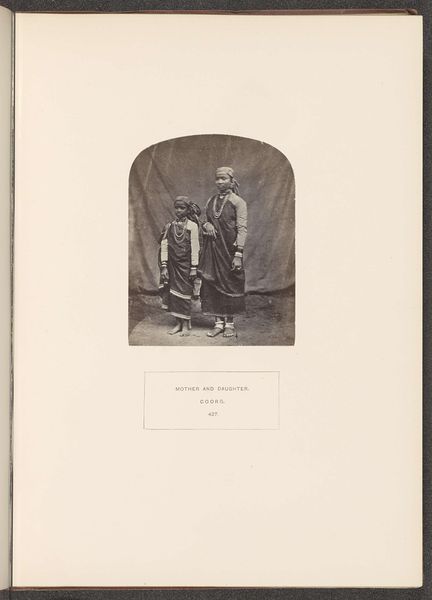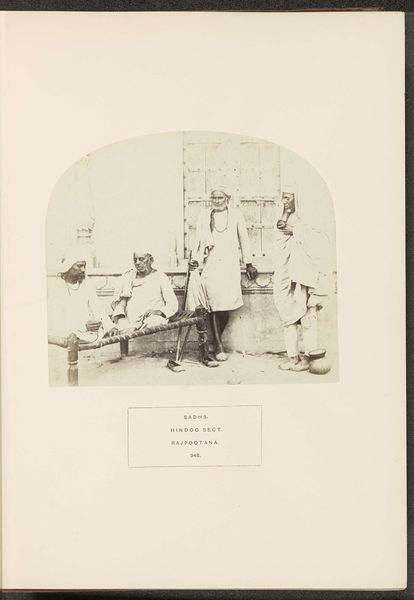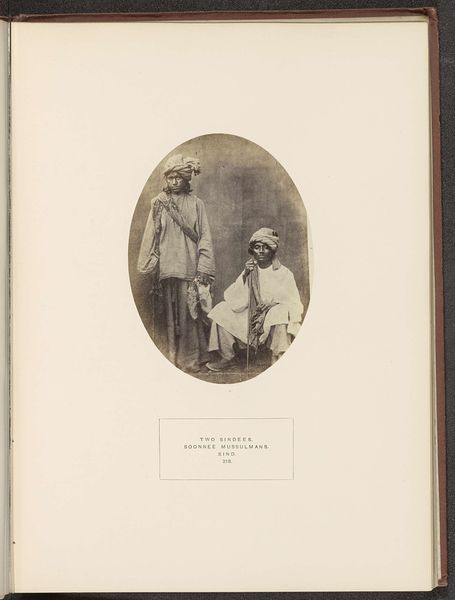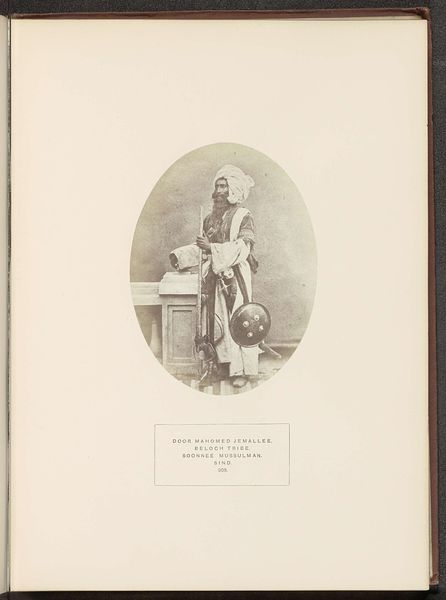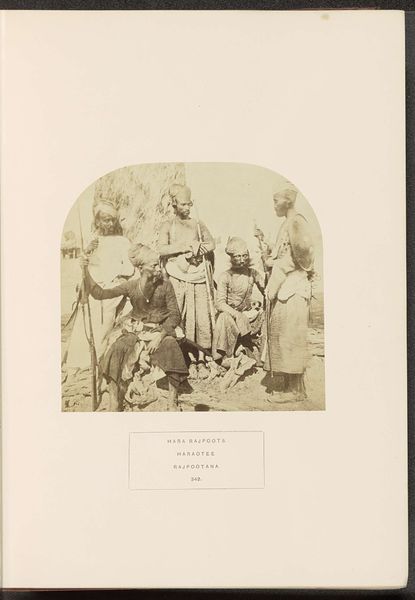
Twee mannen op een stoep en een vrouw in een deuropening in Delhi before 1869
0:00
0:00
photography
#
portrait
#
photography
#
orientalism
Dimensions: height 147 mm, width 152 mm
Copyright: Rijks Museum: Open Domain
Curator: Before us is an early photographic work by Shepherd & Robertson, entitled "Two Men on a Step and a Woman in a Doorway in Delhi," dating from before 1869. The sepia tones give it such an aged feel. Editor: Yes, there is an arresting quality of suspended time to the image; a quiet tableau framed by stark light. What narrative might be gleaned from this brief glance into colonial India? Curator: Consider how the composition is rigidly structured: the seated figure to the left balances the standing man on the right, with the woman anchoring the center—a spatial hierarchy at play, no? Each gaze seems carefully calibrated. Editor: Absolutely. It speaks volumes, doesn't it, about the imposition of Western vision, particularly in the visual syntax of orientalism that shaped perceptions of the East and facilitated an imperial gaze? The carefully staged subjects invite critical deconstruction: How do gestures, posture, and attire perform gendered roles? Curator: Quite, we might also examine the tonality. Note how their clothing stands in high relief. The arrangement also reveals how Shepherd & Robertson manipulated the contrast to direct the eye, accentuating both textures and contours of dress. Editor: It prompts reflection on how power dynamics are staged photographically. Who held agency in this encounter? Who commanded the act of seeing, defining, naming. How do their very postures embody power—or submission—under a system of oppression and appropriation? Curator: A productive point. Beyond those dynamics of visual representation, note the framing afforded by that arched architectural opening—which highlights an important geometric play, adding subtle dynamism and drawing the viewer into a perceived "truth." Editor: Truth is complex here, wouldn’t you say? As postcolonial critique implores, can photographs such as this offer windows to understanding colonial attitudes, however staged and mediated those representations are? Ultimately this work reveals the layered nature of perception itself. Curator: Indeed, these subtleties leave us with much to contemplate about photographic intent, structure and lasting legacy. Editor: These complexities of identity and vision endure well beyond the aesthetic choices, offering insights into cultural encounters that speak across history and empire.
Comments
No comments
Be the first to comment and join the conversation on the ultimate creative platform.


